“Behold, I make all things new.” Rev 21.5
Wishing you all a very Merry Christmas & a Happy New Year!
Get Strong. Be Strong. Stay Strong.

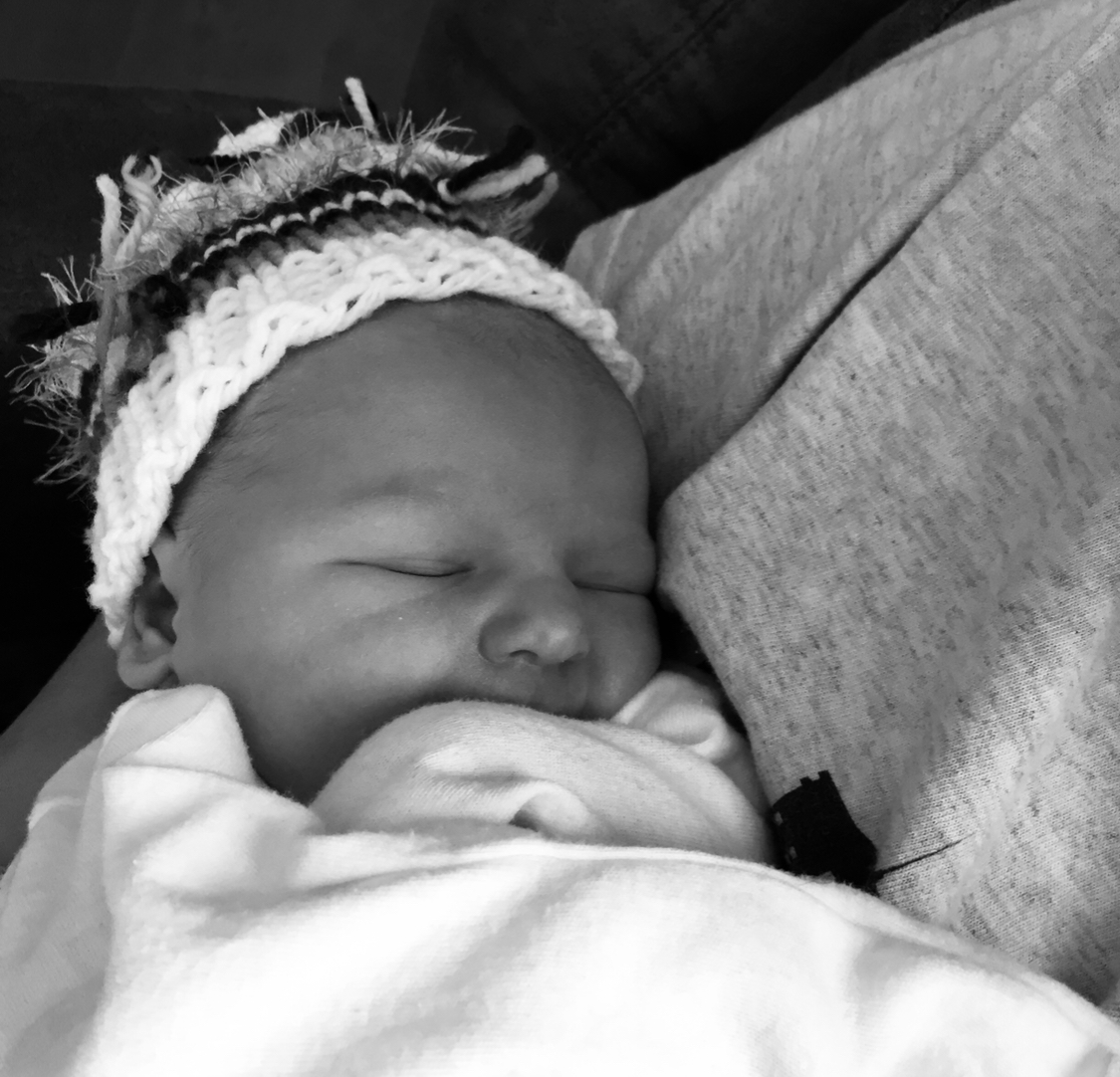
“Behold, I make all things new.” Rev 21.5
Wishing you all a very Merry Christmas & a Happy New Year!
Get Strong. Be Strong. Stay Strong.

People talk a lot about self-care these days, but many of us neglect keeping things in balance. Participating in a healthy self-care regimen includes more than pampering. It means taking action to meet your mental and physical needs in a manner that helps you prosper.
What is self-care? Many people feel self-care can be as simple as getting a monthly facial or buying anew pair of slippers. While those could be parts of someone’s plan, a self-care program should include activities that promote overall wellness. There should be balance and attention to basics. Ideally, your program will include good nutrition, sufficient sleep, time with friends and regular exercise.
Getting fit. Is exercise part of your self-care routine? Beginning a fitness plan can be overwhelming, but the key is to have realistic goals. Verywell Fit suggests starting with a walking program. You just need a pair of comfortable shoes and a safe place to walk, and it’s an easy activity on your joints and muscles. Even though it’s simple, you can still make great progress. Talk to your doctor before you start, especially if you have been sedentary for a long period of time.
How much should I exercise? Sometimes we think exercise should be all or nothing, especially if we can’t see immediate results. However, slow and steady progress can help prevent injury and make your program more enjoyable. Some experts suggest an exercise regimen including a minimum of 2.5 hours doing moderate aerobic activity per week, along with a couple strength-building sessions.
Recover and refresh. To keep things balanced, your fitness routine should include recovery time. For instance, an occasional at-home spa day refreshes and rests your body after focusing on getting in shape. You can use homemade, soothing skincare treatments and masks, give yourself a hot rock massage, brew a cup of your favorite tea and play relaxing music. Keep the space uncluttered and free of distractions. A day here and there in your personal spa can help you to maintain a positive outlook and feel good about yourself. Try participating in some mindfulness while you’re at it, increasing your awareness of what your senses perceive. Mindfulness encourages relaxation and focus.
Limitations and boundaries. Do you burn the candle at both ends, or is your job situation setting you up for burnout? You might feel like you simply haven’t the time or energy to workout. Psychology Today recommends keeping things in check as part of your basic self-care plan. Find ways to decompress throughout your day, not just occasionally in the evening or on the weekend. Try taking a walk, meditating, or sitting outside in green space.
Also consider revamping your work environment, if necessary. Maybe you’re situated under fluorescent lights all day, and you could benefit with a window view. Or perhaps you’re working unsustainable hours, and switching your schedule around could help you become more productive and effective. Oftentimes management is unaware of problems unless those issues are brought to their attention. Talk with your supervisor about how to make improvements, and for the best results be prepared with suggestions rather than just complaining about what isn’t working.
Energy and attitude. Having the energy to properly balance yourself-care plan is crucial. One of the often-overlooked aspects of a healthful and energetic lifestyle is getting sufficient sleep. Without enough sleep, you can damage your mental and physical health, even risking chronic fatigue and burnout. You can lose vitality, become irritable and even shorten your lifespan. Schedule a bedtime and wake time for every day and stick to those times. Keep your exercise routine in the morning or early afternoon, ensure your sleeping environment is comfortable and avoid napping during the day.
Balance your routine so you can feel happy, positive and fulfilled. Adjust the priorities in your lifestyle so you include fitness. Ensuring you meet the needs of your mind, body and soul is the key to an overall healthy self-care program.

Martin Fanbee is quoted by then Colonel David L. Goldfein in his book Sharing Success Owning Failure as saying “Learn from the mistakes of others. You won’t live long enough to make them all yourself.” I’m making more than my fair share…so you’re welcome.
Mistakes are not only the result of weakness and poor decisions, but also the result of failing to prepare. I left off last time talking about being prepared, as well as the consequences of being unprepared. Our failure to prepare often results in discomfort at best and utter chaos, disaster, or severe heartache at worst.
Thanks to a televised Janet Jackson incident some years ago, I now know the proper terminology for my many embarrassing clothing mishaps. On the ‘discomfort’ end, being unprepared for wardrobe malfunctions has resulted in my tie in the toilet while pulling up my pants, a favorite tie in the shredder while still attached to my neck, and not having any tie at a black-tie affair. Toward the other extreme, being unprepared to raise children resulted in many missteps, mistakes, and missed opportunities; and the realization I probably should have waited until age 50 to have them. Of course, I never would have won an arm-wrestling match if that were the case.
I have spent nearly my entire life preparing my body to withstand a career in the profession of arms, to be functionally fit, and to feel good about the way I look when I pass by a full-length mirror naked. I have likewise tried to prepare my mind for critical thinking and vocational success by gaining wisdom and knowledge. And I have spent a good deal of time helping others do likewise. But despite all that, I remain insecure and emotionally unprepared in many ways. These weaknesses sometimes lead to carelessly being drawn into situations I know better to avoid.
Similar to preparing for cold weather by wearing bread bags in your boots, string mittens, and so many layers of winter clothes that there would be little need for side-impact airbags in your car, maybe preparing for life involves putting on a few things. Things like armor…literally and metaphorically; physically and emotionally.

Literature convinces us that in medieval times, knights were powerful symbols of bravery and nobility. But a knight wasn’t a knight overnight. It took years of training, learning, and preparation. The page learned from the squire, who learned from the knight. The knight prepared and affirmed his commitment to knighthood by learning and living chivalrous knighthood ideals such as being brave in battle; loyal to God and King; willing to sacrifice himself for the greater good. And to be merciful, humble, courteous, gracious, and gentle. I read somewhere that ‘not all knights were great men, but all great men were knights!’
Armor provides a great metaphor for the importance of preparation…even better than your mom’s recommendation of always wearing clean underwear in case you’re in an accident. There’s perhaps no better rendering than that of Apostle Paul in the sixth chapter of Ephesians when it comes to preparing for life. He used the battle dress of the Roman soldier as his object lesson, but we can relate in the same way to today’s law enforcement officer or military fighter.

It begins with being ready to stand firm under pressure (also mentioned in a previous article). It is followed by donning the proper equipment (or pieces of armor), each one serving a literal protective purpose and metaphorically representing spiritual, mental, emotional, and physical protections. The first is the ‘belt of truth’; used by the soldier to mount weapons, secure garments, and protect or ‘gird’ the loins and lower body. We all have secrets in dark places we never want revealed. But spiritual truth is needed in a dark world. “In the long run, it matters little what others say or think; it matters a great deal whether or not truth stands.” – Wendell L. Miller
The next few pieces are the breastplate (body armor), protective footwear (practical to the situation), the shield, and the helmet (headgear). Each one representing a facet of spiritual faith and practical physical use…and each defensive in nature. The last piece Paul cites happens also to be the only offensive piece of equipment – the sword (duty weapon).
We could go much deeper here, but I’m sure you get the picture. Sure, you visualized them at least once through all that looking exhausted from battle and caked with dust and dripping with sweat, blood and tears. But think of them all cleaned up, standing tall and proud, crisp and ready for inspection. There’s nothing like a man or woman in uniform. They look pretty damn good, right?! A regular knight in shining armor…

But beware, trusted caballeros. When one puts on all that shiny armor, there may be a certain visual appeal that draws attention that may become a stumbling block for the weak or unprepared. If you are prepared for random notes on your car, impromptu show-ups, and terms of endearment like ‘Muffin Tushy’ or ‘Applesauce’, then not to worry. If you’re not, I guess you’re more like I’ve been much of my life than you care to be and we’re back to paragraphs one through four.
I am my greatest adversary. I need to prepare better. I need the Armor of God.
Get Strong. Be Strong. Stay Strong.
Goldfein, D. L. (2001). Sharing success owning failure-preparing to command in the twenty-first century Air Force. Maxwell AFB, AL: Air University Press.
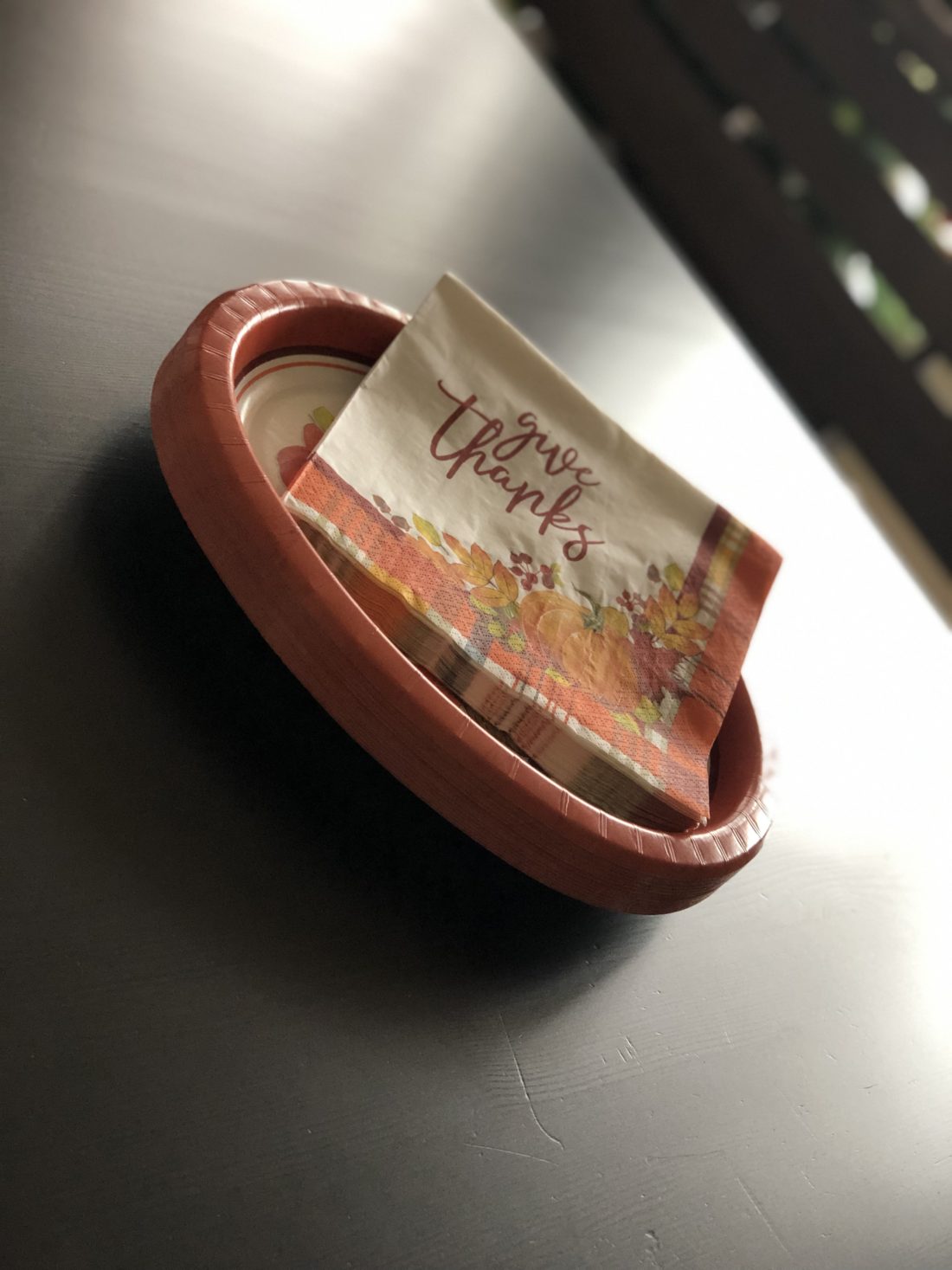
“Giving thanks always for all things…” – Eph. 5.20
Thanksgiving Message – Click for Video
I’m grateful you choose to follow BeyondStrength.Org
Happy Thanksgiving, everyone!
Get Strong. Be Strong. Stay Strong.
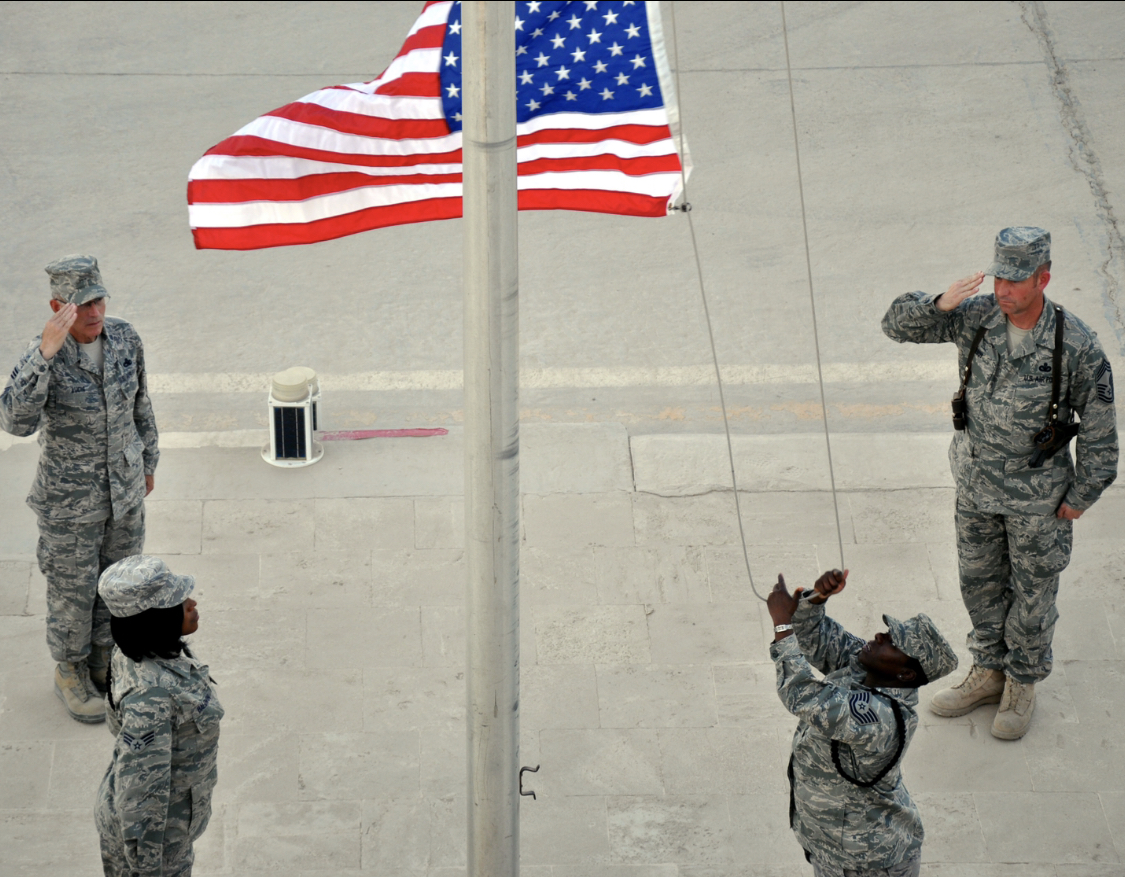
“One cannot answer for his courage when he has never been in danger.” – Francois de La Rochefoucauld
What we do, and how we do it, is of great interest to many.
Happy Veterans Day!

Get Strong. Be Strong. Stay Strong.

As colder weather rolls into Michigan, I am reminded how much I dislike it. But it occurs to me that I haven’t always disliked it. In fact, I’m pretty sure I used to love playing in the snow and staying out in the cold until my extremities were numb and snotsicles bridged the gap between my nostrils and upper lip. And it wasn’t too long ago that I remember poking fun at my dad and other ‘old people’ because of their intolerance of the cold and propensity to leave us all behind as they fled south for months at a time. Deep down I’m sure it was just envy…for not having the freedom myself to disappear to the land of milk and honey (or is it Geritol and ginger-ale?) for months at a time. And although I don’t see him nearly as often as I should in the months he’s nearby, the bigger reason for my deflections-disguised-as-harassment-about-the-weather is simply that I miss him while he’s so far away. Perhaps a little reluctant to admit I am starting share his disdain for the cold, too.
It’s true…as if right on schedule to reinforce the irony of it all, I am finding the older I get, the less I care for the cold. And the more I’m saddened to say that I, too, may soon appreciate the simplicity of Velcro shoes and the golf cart as a primary mode of transit. So as I try to do in other areas of my life (at least better than I used to), I am taking a hard look at why I have done things, why I do things, or why I feel the way I do about certain things. Nature’s changing season is just the latest timely reminder of my own changing nature.
In the Midwest, the thick heat of summer gives way to the crispness of autumn air. It blesses us with the splendor of colorful leaves, tastes of cider, and the smell of pumpkin spice. Another blessing of this change in season is the transition itself. Not only does the transition prepare the environment for the harshness of winter, it similarly prepares us by moving our bodies from dramatic heat to bitter cold by gradual acclimation as we pass through a milder autumn.

So what’s the problem? With that reasoning I should have no problem acclimating to the biting wind, cold, snow, and other extremes of winter. I think one the things it boils down to is preparation; wearing the right clothes the right way, having the right equipment and resources, and having the right attitude. I have concluded that when facing extremes – whether in life, temporary circumstances, or environment – an increase in discomfort often involves a decrease in (or lack of) preparation.
Consider this. If you grew up in a ‘four-season’ part of the world, you probably had a mom, dad, grandparent or other adult who bundled you up like the Michelin Man before going out in the cold, making you virtually impervious to the elements. I remember everything from the mittens attached by a string running from one sleeve to another, to wearing bread bags on my feet inside my boots to keep my feet toasty and dry (personally I think my mom was conducting some early study in the greenhouse effect with those bags). But those things worked. Buttoned up, zipped up, no exposed skin. Hats, mittens, scarfs, the right coat, pants, socks, boots, and long underwear. You could stay out for hours and not be bothered by the coldest of days. Even now, when I actually wear appropriate clothing and accessories for the conditions, the weather really doesn’t bother me so much.

The problem is I usually don’t. I don’t prepare properly. I don’t wear the nice warm stocking cap because it will mess up my hair. I don’t wear the thick socks and warm boots because they’re cumbersome, uncomfortable, and it’s just a pain to change into other shoes when I get to my destination. I seldom wear gloves, scarf, or even zip my coat up. Is it any wonder I have started to dislike cold weather? I should either dress for the weather or stop complaining about it. And while I think there are a few other lessons we can take from this, I want to keep this at a reasonable length, respecting your time and attention. So with the assurance to continue this subject in a second part soon to come, let me wrap up with these points.
In the same way the changing seasons prepare us for more extreme conditions yet to come, and properly outfitting ourselves prepares us for the extreme conditions we venture out into, properly preparing ourselves mentally, physically, emotionally, psychologically, and socially can help us through some of the extreme conditions of life.
Until the next edition, prepare for the changing season by bundling up, wrapping up, zipping up, breaking out your bread bags, and above all never forgetting how much fun it was to be a child. Keep that youthful spirit alive!

To everything there is a season, a time for every purpose under heaven (Ecclesiastes 3.1)
Get Strong. Be Strong. Stay Strong.
It has come to my attention that the articles received via e-mail subscription may not be displaying properly in the body of the e-mail message. For proper readability and to ensure you are getting all photos, text, and links displayed properly, please select the title of the blog article within the e-mail message.
This will open the article in the intended format directly from the website/blog.


I apologize for any inconvenience.
Dave E.

Stand fast is defined, in part, as to firmly remain in the same position or cease all action immediately. I’ve heard it widely used in military life in a few contexts, the most common to me of waiting to move after a preparatory command was already given…sometimes seemingly as if to test the formation to see who’s going to be the one to flinch: “Flight, Attention! Forward…Stand Fast!” You don’t want to be the one who false starts and then fumbles around trying to reset as if no one noticed the ONLY body cavorting around in a sea of stalwarts.
For this article, the standing fast to which I refer is similar, but more akin to standing firm…in strength, power, resoluteness, faith; the kind of strength to carry on when it would be easier to just roll over. It’s the kind of strength that when the whole world or the gallery of so-called experts, know-it-alls, or haters (as today’s generation might call them) tells you to just give up and get out of the way, you stand firm and say “No, you move…I’m not giving up…I’m strong…I’m a survivor…I’m a conqueror.” Standing firm in this way takes a different kind of strength than we typically think of.

A recent quiet time illustrated two divergent types of strength – active and passive – that might help clarify my point. As I thought through the author’s analogies and applied them to my own life, I began to appreciate the need for each at different times in our lives. The author, Harold Cooke Phillips, said it better than I ever could, so I’ll let him handle this.
“Sometimes nothing is harder in life than just to endure. There are two types of of strength. There is the strength of the wind that sways the mighty oak, and there is the strength of the oak that withstands the power of the wind. There is the strength of the locomotive that pulls the heavy train across the bridge, and there is the strength of the bridge that holds up the weight of the train. One is active strength, the other is passive strength; one is the power to keep going, the other is the power to keep still; one the strength by which we overcome, the other is the strength by which we endure.”
Sixteen years ago, a healthy, active 13 year old attended his local county fair to watch the motocross races. He left the fair in a helicopter, critically injured, unconscious, with a depressed skull fracture and his life would never be the same.
This young man is one of my nephews. He and another spectator were struck by an out-of-control cycle that left the track. When my dad’s call woke me in the middle of that July night and he told me what happened, he said things ‘didn’t look good’. My nephew remained critical and comatose for weeks. He was ultimately transferred to a renowned rehabilitation hospital where he eventually regained consciousness.
 Through faith, prayers, amazing staff, rigorous physical and speech therapy, and his incredible resilience, he finally started to look at people, move his lips, and comprehend things again. He gradually improved, spending many months in a wheelchair, followed by a walker (neither of which he uses today). Through God’s amazing healing power, tremendous medical care, his incredible strength, and the loving support of many, he eventually went home. In June 2007, my nephew graduated with honors from high school and later from Michigan Career & Technical Institute.
Through faith, prayers, amazing staff, rigorous physical and speech therapy, and his incredible resilience, he finally started to look at people, move his lips, and comprehend things again. He gradually improved, spending many months in a wheelchair, followed by a walker (neither of which he uses today). Through God’s amazing healing power, tremendous medical care, his incredible strength, and the loving support of many, he eventually went home. In June 2007, my nephew graduated with honors from high school and later from Michigan Career & Technical Institute.
The damage his brain suffered from the injury had lasting effects on his speech and his right extremities, but that doesn’t slow him down. He’s a husband and father, and is as fun-loving and quick-witted as ever. He is strong, hard-working, and an inspiration to me and many others because of the person he is and the example he sets with his huge smile and easy-going disposition. Every chance he gets, he goes out of his way to text, call, or visit with friends and family. While it was tough early on to see the impact this had on him and his family, I am so proud of the man he has become. Some of the things I truly enjoy in life are the rare occasions to lock arms with him to help navigate a set of stairs or other challenging terrain, and being the recipient of the smiles, hugs, and “I love you”s that he unashamedly doles out…the way more of us should.
 My nephew’s life has been a case study in both the strength to endure and the strength to overcome mentioned above. He continues to be one of the strongest people I know.
My nephew’s life has been a case study in both the strength to endure and the strength to overcome mentioned above. He continues to be one of the strongest people I know.
“The physical strength of a person must always be added to the strength of his or her soul and power for marshaling the resources of truth, righteousness, and love.” – J. Richard Spann
Get Strong. Be Strong. Stay Strong.
It is my honor to dedicate this article during National Disability Employment Awareness Month to him and all those who stand strong and persevere through their disabilities, setting an example for us all.
https://www.dol.gov/odep/topics/ndeam/index-2018.htm
Hunsberger, E. & Nygaard, N. (2002). Strength for service: daily devotional messages for those in the service of others updated edition. Franklin, TN: Providence House.
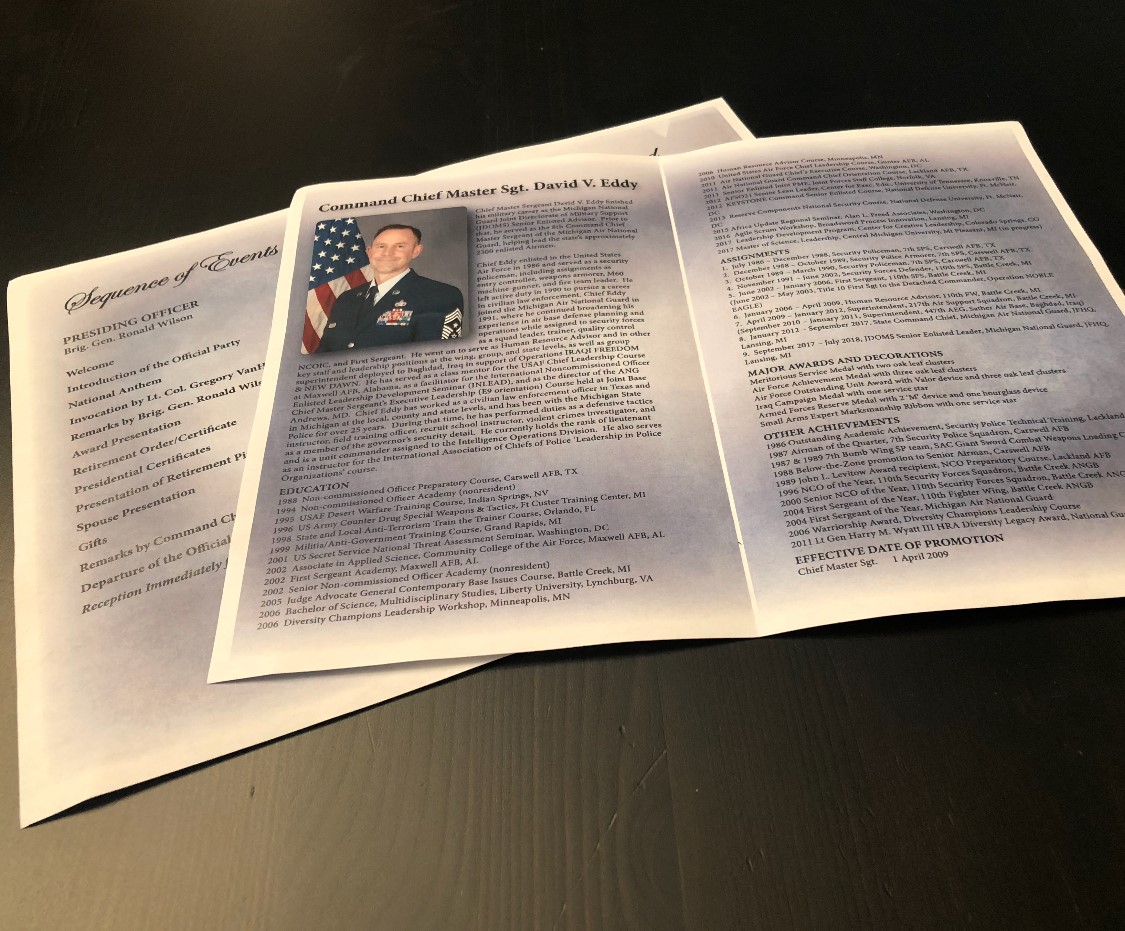
I’ve had a number of people ask if my recent retirement speech was recorded. To my knowledge it was not. For this post, I’m sharing the text from which I spoke.
DISCLAIMER: What follows may not contain everything that was said, nor was everything written here necessarily shared during the live recitation. Also please note this is slightly longer than I prefer for posting on this blog. However, I hope you’ll find it worth the extra few minutes to read.

Military retirement speech delivered August 4, 2018 at Battle Creek, Michigan:
When I was young I wanted to be a radio broadcaster like my dad. But after coming to terms with the realization that I look and sound like Howdy Doody, I figured a career in the profession of arms was the next best thing.
I’ve been very blessed over a career that started in 1986. I can tell you honestly that despite some missteps here and there, I always tried to be the very best leader I could be, trying never to forget who I was or where I came from…whether as an M-60 machine gunner; as a fire-team or squad leader; or ‘the enlisted leader’ of 2300 or so Airmen.
During my career(s), I’ve seen and done things many people will never have the opportunity to see or do. Quite frankly, some things no one should see or do. The thing is, when you spend your entire career solving other people’s problems, you tend to ignore your own. And unlike wine or cheese, problems don’t get better with age.
So despite reaching heights I never imagined as an Airman and leader, I’ll tell you honestly that I have not always been the man I should have been. I’m a living example that a person can be quite successful in their life and career, yet still be plagued by unresolved issues or personal demons living in the shadows of their soul. If you knew even half of the dumb things I have done, there’d be about three people in the audience right now.
But I’m glad you’re here to help celebrate my military retirement. And since you ARE here, I’d like to share share some things about a few leaders I’ve known who made a difference in my life & career.

In 1987, and again in 1989, I was selected to compete on the security police team in Strategic Air Command’s Combat Weapons Loading competition ‘Giant Sword’. I’m not going to lie…it was a pretty big deal. And to be picked twice was ‘off the hook’ as the kids say. Do the kids still say that?
After the 1987 competition in Spokane, Washington, I was chosen to toast the Chief Master Sergeant of the Air Force (CMSAF) because I was the lowest ranking person at the table…maybe the whole room. I was a nervous, skinny 20 year old kid trying to speak in a room of about 500 people, with no microphone. I was shaking; my voice was quivering. I felt like a fool. I sat down relieved it was over. A few minutes later, one of the servers came over and handed me a note. It was from CMSAF James Binnicker, the man I had just toasted. If you haven’t figured it out, he was kind of a big deal! The note read “Thanks for the toast, Airman! By the way, your fly is down.” As far as I remember my fly wasn’t down, but he knew I needed to be encouraged. His actions and words revealed the character of his leadership.
Fast forward to 1989. I was the top graduate from NCO prep course; I had been chosen as Airman of the month and of the quarter; I was promoted ahead of my peers (below-the-zone); I had been kicking a**… I mean, I was doing really well on all my job qualification testing. I was on a pretty incredible run for a couple of years, and in case you haven’t figured this out yet, I was kind of a big deal!
So there I am one day somewhere in between all this, leaning against the shack of my assigned flight-line gate when a patrol car rolls up. It’s driven by a NCO I recognized, but he wasn’t in my chain of command and he never impressed me much, anyway. Maybe he hadn’t heard, but I was kind of a big deal. My grandma would have said I was a little too big for my britches…and she’d have been right.
I peeled myself from he side of the shack and sauntered over to his patrol car wearing my best pair of Army gloves (I had my hands in pockets). One DOES NOT do this as a Security Forces Defender. Ever. Especially on post. I casually, borderline disrespectfully, ask “Hey what’s up?”, to which he asks “Why don’t you go over to the other side of the car and ask that?”
I peered through the window as I walked around the back of the car and saw the passenger was Chief Master Sergeant Rochelle. A feared man from Little Rock, Arkansas, Rochelle literally WAS a big deal. I reached his door, snapped to attention, and delivered the requisite reporting statement…”Sir, Airman Eddy reports post Foxtrot Two all secure. Would you like a post briefing?” The chief stared through me and replied ”I was actually stopping to tell you what a great job you’ve been doing lately, but I think I’ll hold off on that for now.” They drove off and left me standing alone at the position of attention in a cloud of dust. I was mortified…what an idiot I was.
A w eek or so later Chief Rochelle came through my entry control point in the weapon storage area. I again snapped to attention and reported my post: “Sir, Airman Eddy reports ECP Whiskey Three all secure, would you like a post briefing…?” I apologized for my miscue during his last encounter with me. He said all kinds of nice things about me and left with “…you’re going to be Chief Master Sergeant of the Air Force someday.”
eek or so later Chief Rochelle came through my entry control point in the weapon storage area. I again snapped to attention and reported my post: “Sir, Airman Eddy reports ECP Whiskey Three all secure, would you like a post briefing…?” I apologized for my miscue during his last encounter with me. He said all kinds of nice things about me and left with “…you’re going to be Chief Master Sergeant of the Air Force someday.”
He knew I needed to be encouraged. His words and actions showed me the character of his leadership.
I left active duty after four years to pursue a career in civilian law enforcement and moved back to Michigan with a pregnant wife and no job. Not one of my wiser life decisions, but we made it work by living in my in-laws’ basement and the generosity of my friend giving me a job driving a grain truck to help with the harvest. I also joined the Air National Guard at this very base.
I worked hard, offered what I could, learned a lot, and ended up in a place I thought I could compete for Wing Command Chief (CCM). I was the only applicant, but ultimately wasn’t selected. I was pretty devastated. Not long after, Chief John Kemp, a former Wing CCM and long-time friend and mentor, stopped in my office and laid a set of his own CCM stripes on my desk. He looked me in the eyes and said “Don’t give up…it will happen when it’s time.”
Chief Kemp knew I needed to be encouraged. His words and actions showed me the character of his leadership.

Each of those men essentially told me what I understand Bill Parcells said to Tony Romo after he botched the snap on a field goal attempt that would have sent the Dallas Cowboys to the next round of the 2007 playoffs: “Don’t let the fumble define you.”
Romo needed to be encouraged. Parcells’ words and actions showed the character of his leadership.
I never became CMSAF. But I did become enlisted leader at a level I never imagined possible. And my time directing the Air National Guard Chief’s Executive Course (E9 orientation) in Washington, DC provided many chances to visit his office in the Pentagon. I may have even partied on his front lawn at Andrews Air Force Base a few times. So, yeah…
I had a pastor that used to say “Being a Christian isn’t easy, it’s impossible! We can’t do it on our own…that’s why we need a savior.” I feel the same way about life and leadership. It’s NOT easy. In fact, it’s impossible unless you’re surrounded by great people, great friends, and great family. People who support you no matter what; people who don’t love and support you because of who you are…they love and support you in spite of who you are. They are also willing to tell you what you need to hear. They are people who care about you and love you unconditionally. I’ve been blessed with many people like that in my life and both careers – many who are here today.
I want to thank the staff and everyone who put this event together; dignitaries; special guests; childhood friends; coworkers; and all the rest of you who are here, despite knowing the real me. And of course my family.

I’ve talked much longer than I should, but I want to just leave you a few final thoughts.
Former ANG Command Chief Gary Broadbent used to say that ‘everyone messes up, but those same people have done far more incredible things; don’t throw the baby out with the bath water…give them the chance to do more amazing things.’ We need to pick them up, dust them off, recognize their need for encouragement, and remind them the fumble is not what defines them.
A boyhood friend I haven’t seen in decades sent me this message on social media just a few days ago. As far as I know, he’s never served in the military, yet this is the insight he shared:
Congratulations. Thank you for your service.
It’s all cool when it’s pictures on FB and stuff.
Never forget the men and women you served and were deployed with. I am positive you impacted them with your leadership. Look for them at this celebration look them in the eye, shake their hands and give them a hug. Tell them how much they mean to you. There are probably many that you impacted that you weren’t even aware of. Make sure to thank them too.
I hope you future is filled with the laughter of children, loved filled challenge and the growth in love and knowledge of the Wonderful Savior!!
He gets it doesn’t he?
You’re going to think what you will about me. If it’s bad, I certainly deserve it. If it’s good, you’re really very sweet, but perhaps a little bit misguided. I appreciate it nonetheless.
I am going to miss this and all of you. As far as I know, I still have a day job for a few more years, and I’ve started a Life, Leadership and Fitness website and blog you can follow if you’re interested in keeping up with what I’m doing in retirement.
But if you need a character-limited version to remember me by, use this: leader, follower, angel, sinner, gentlemen, wretch, needy, giving, broken, redeemed.
My good friend and retired ANG Command Chief Jim Hotaling used to say this, and I feel the same way: It has been my honor to serve with and help lead the greatest weapon system in the world – the American Airman!
I’m blessed and grateful you all chose to be here with me today, and I am a better man because you’re in my life.
I love you all. Thank you.

*Photos added for blog. Some photos courtesy of Mr. Art Frith, USN (Ret.)
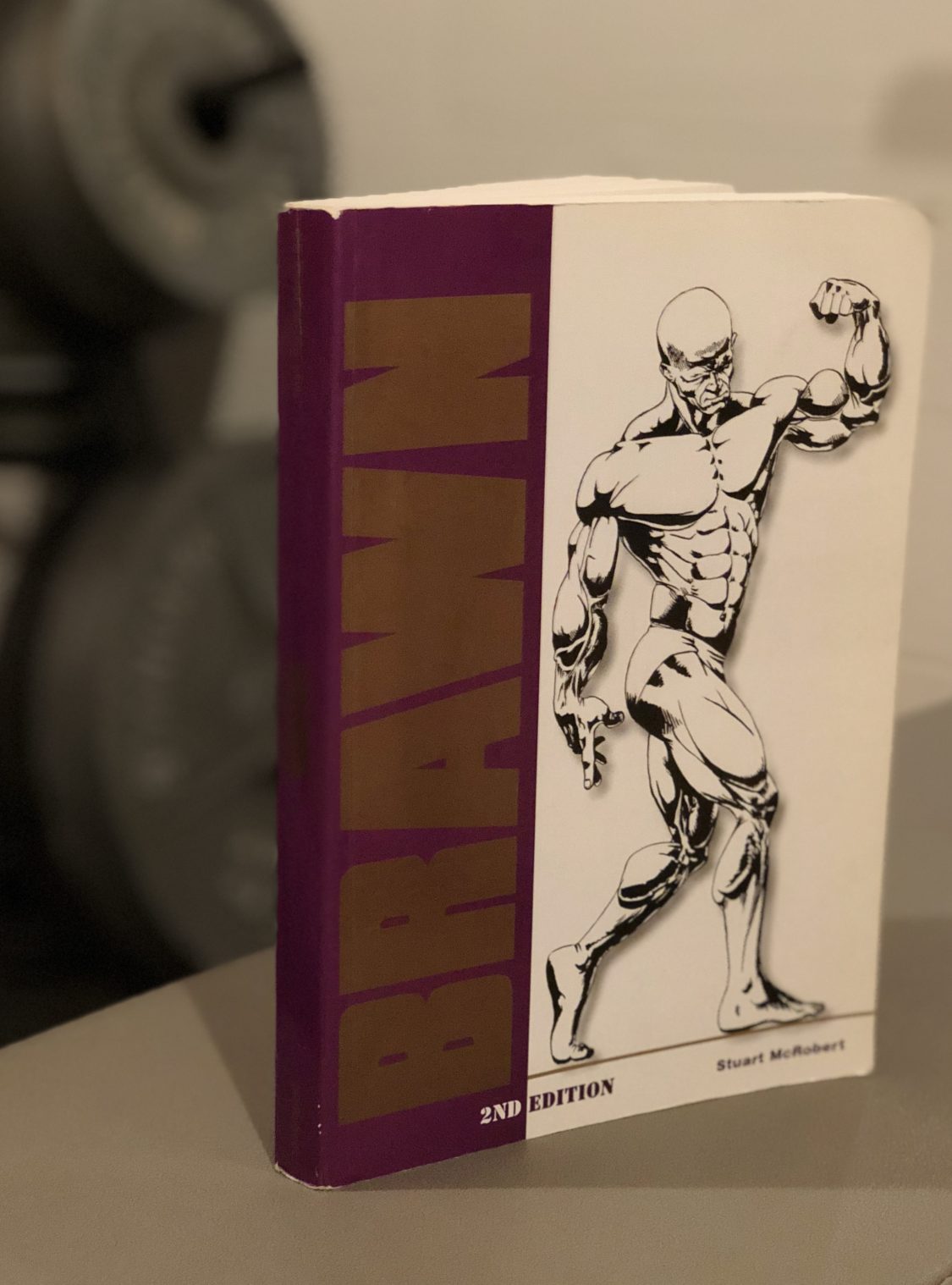
For years, I struggled to make muscular gains…at least the growth I desired. I was in good shape, but I was always thin and wiry. I wanted to be bigger.

I experimented with every variation of workout and rep scheme around to make gains. The fact is, I was a ‘hard gainer’. I learned about this concept after a friend encouraged me to read the book ‘Brawn’ by Stuart McRobert. By doing so, I learned that few of us are genetically gifted the way most ‘professionals’ are. Add drug enhancement to that and it’s a recipe for disappointment, frustration and discouragement for average ectomorphs like me.
That’s not to say there isn’t merit in their knowledge and workouts widely shared in mainstream fitness media; the big-guns didn’t get to where they are by sloughing off or adhering to ineffective workouts. But the reality is I was genetically typical and drug-free, and I had to find what worked for me. I discovered less was more.
I started seeing breakthroughs in growth and strength by giving my body more rest and doing fewer reps with heavier weights. For weight training, I stopped the ‘typical’ workouts and finishing moves in favor of lifting twice per week and focusing on major movements like bench, squat, deadlift, military press, and barbell curls. I inched the weight up incrementally each workout.
There is a time and place for specialization and isolation movements, but I needed a stronger foundation first, according to McRobert. I agreed. The major movements provide plenty of incidental work to the smaller muscles, anyway. I also came to terms with the reality that without superior genetics or drug enhancement, I would never look like Arnold, Lee Haney, Reg Park, Sergio Oliva, Frank Zane, Ronnie Coleman, or any other bodybuilding giant. But I knew with hard work, persistence, and the right combination for MY body type, I could realize respectable gains. Through that, I would look and feel better than I ever thought possible.
As I aged, I also gained a greater appreciation for ‘functional fitness’. Maybe it was a career in the profession of arms where quickness, endurance, strength, and physicality are often the difference between success and failure or life and death. It was also the aging process that lent itself to introspection; I grew up enough to know that while Hugo Hugenator might be enormous and can lift a bus, there’s something to be said for being able to put on your own deodorant, tie your own tie, or outrun a five-year-old. A functionally fit person has endurance, flexibility, versatility and strength that neither he nor Gina Ginormabottom will ever have. Not to mention some important parts haven’t been zapped by Rick Moranis’s shrink ray. #honeyIshrunktheyouknowwhats #horso’doeuvres #notafanoflittleweinersandtinynuts
Here’s some bottom line tenets that have been true for me.
1. Consistency is Key. I have watched friends and family struggle with fitness and weight loss by yo-yo dieting or the latest lose-weight-quick fad. I have personally found that being consistent over the long-term and making fitness and physical activity a lifestyle choice makes the difference. I made working out habit enough that it stresses me out me when I don’t do it. People who know me can attest to my neurosis about this and the ensuing edginess when I miss too many workouts.
2. Portion Control = Self Control. I could easily eat until I’m miserable. Sometimes I do…I love to eat! Portion control is one of the biggest factors in keeping excess weight off. Your body needs calories, and even though you may be able to do crunches all day, if you have a calorie inversion, we may never see your abs. If you want a six-pack that doesn’t require refrigeration, do the math; if you take in way more than you burn off, you’ll probably get a little fluffy. I don’t obsess about what I eat, but I do try to avoid a lot of fried food and too much junk. I focus on lean protein, high fiber, fruits, nuts, and veggies.
3. Know Your Body. It took me a long time to crack the code on how my body responded best. It changes with circumstances and as you age. As I’ve gotten older, I’ve experienced more aches and pains and I’ve lightened my weights some. But through it all I find lifting only a couple times a week and staying active with running or other cardio-strength activities the other days still gives me the best results. DON’T overlook strength training. I’m convinced building and maintaining muscle is a fat-burning fountain of youth.
I was probably in the best physical shape of my life during three periods between age 19 and 26, but I was almost 50 before I finally felt most healthy and pleased with my overall appearance. Don’t ever give up.

I found what works for me; I watch what and how much I eat; I work very hard, and I’ve stayed consistent over the course of many years.
Figure out what works for you and do it. Hard.
Please see my Fitness & Workouts section at BeyondStrength.Org for workout plan ideas and more information about fitness.
Get Strong. Be Strong. Stay Strong.
McRobert, S. (1991). Brawn. Nicosia, Cypress: CS Publishing.